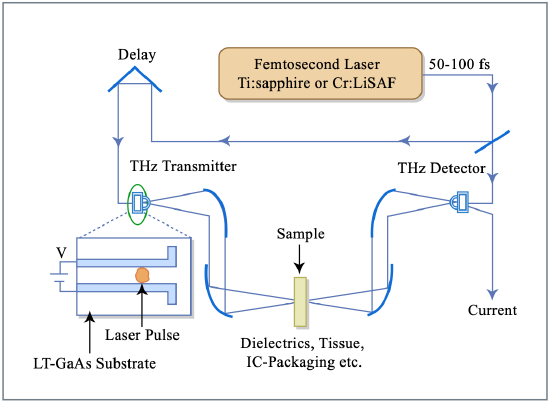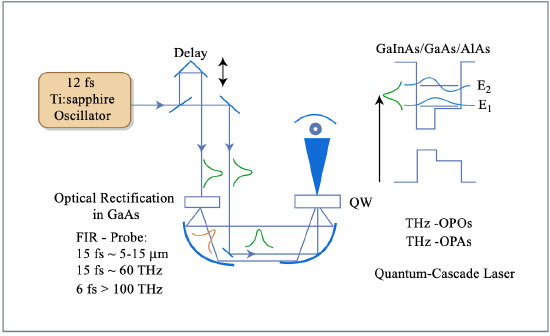11.3: THz Spectroscopy and Imaging
- Page ID
- 44685
Photo-conductive switches activated by sub-100 fs pulses or optical rectification with sub-100 fs pulses leads to the generation of THz electro-magnetic impulses, that can be received with similar photo-conductive receivers or by electro-optic sampling [8][9]. This technique was pioneered by Ch. Fattinger and D. Grischkowsky [7].

Figure by MIT OCW.

Figure by MIT OCW.
Figure 11.11: Terahertz waveforms modified by passage through (a) a 10mm block of stycast and (b) a chinese fortune cookie. The dashed lines show the shape of the input waveform multiplied by 0.5 in (a) and by 0.1 in 9b). In *a( the transmitted plse exhibits a strong "chirp" due to frequency-dependent index, while in (b), pulse broadening indicates preferential absorption of high frequencies [8].
Figure 11.11 shows typical generated THz waveforms and distortions due to propagation through materials.


